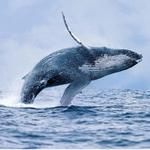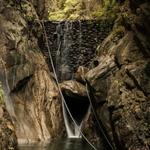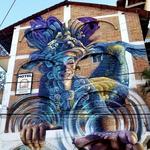Katherine & Jeremiah


Things To Do

Whale watching
The Bay of Banderas, where Puerto Vallarta is located, is a breeding ground for humpback whales, with around 400 of the massive mammals making the annual journey to the calm waters of the bay. The heart of the activity happens just off the shore where the deepest waters in the bay can be found—a prime location for whales to give birth to calves. December to March is considered peak whale watching season, but you may get lucky and spot other aquatic life including olive ridley, leatherback, hawksbill, and green sea turtles, crocodiles, orcas, stingrays, Bryde’s whales, and dolphins.

Hike to a Waterfall
The verdant Sierra Madre Mountains meet the Vallarta shoreline, and this mountainous topography leaves Jalisco towns surrounding Puerto Vallarta dotted with nine waterfalls, many of which can be visited on day hikes. The Yelapa waterfall is the easiest to reach via a paved path and the Nogalito fall is quite adventurous, as you walk in the river to reach it. Both are often packed with visitors, unlike the small-but-mighty El Salto in El Jorullo. To reach this waterfall, join the Canopy River hiking tour. You’ll walk over the 1,500-foot-long hanging bridge and take in spectacular views of the Cuale River. After about a three-mile hike through the jungle, you'll reach the 16-foot-tall El Salto. Wade in and cool off with a swim in the crystal clear waterfall-fed pool.

Cleanse as the Mayans did
Jalisco is home to the Wixárika people, but there are scarce genuine cultural references left in which tourists can see or participate. Instead, traditional wellness experiences in Vallarta are rooted in Mayan culture and participated in by both locals and foreigners. Temazcal is an ancestral Mayan ceremonial sweat sesh conducted in a mud dome filled with herbal steam. The experience is led by a shaman who guides participants through a physical and spiritual cleansing. Cacao ceremonies are also common—the Mayans used cacao as a medicinal plant to open their hearts, a theme that continues in today’s ceremonies. Terra Noble, a healing center perched in Vallarta’s mountains, offers both rituals regularly. Unlike many ceremonies in the Vallarta that area are led by foreigners, ceremonies here are conducted by Indigenous practitioners.

Urban Art Walk
Urban art has taken over Puerto Vallarta and beautified the city’s walls with depictions of Mexican painter Frida Kahlo and vibrant portrayals of local flora and fauna. The Hive Gallery is a spray paint shop in the Cinco de Diciembre neighborhood that drives the street art scene in Vallarta with permission and encouragement from local legislators. Go on a self-guided street art walk using the free map by PV Street Art. A recent mural festival brought colorful new works of art to Vallarta’s open-air museum of murals including a rendition of the Greek god of the sea, Neptune. The piece was painted by muralist Christian René Robles Ramírez aka Piña.

Kayak or SUP to Los Arcos
Among travelers, Los Arcos is a popular spot for swimming, scuba diving, and snorkeling. The clear water means you are sure to see the fish, coral, and other creatures in full color. If you are an experienced scuba diver, there are few places in the world more beautiful than the waters of Los Arcos. Stand-up paddle and kayak tours are abundant to experience the pristine waters and get a different perspective on Los Arcos's natural beauty.